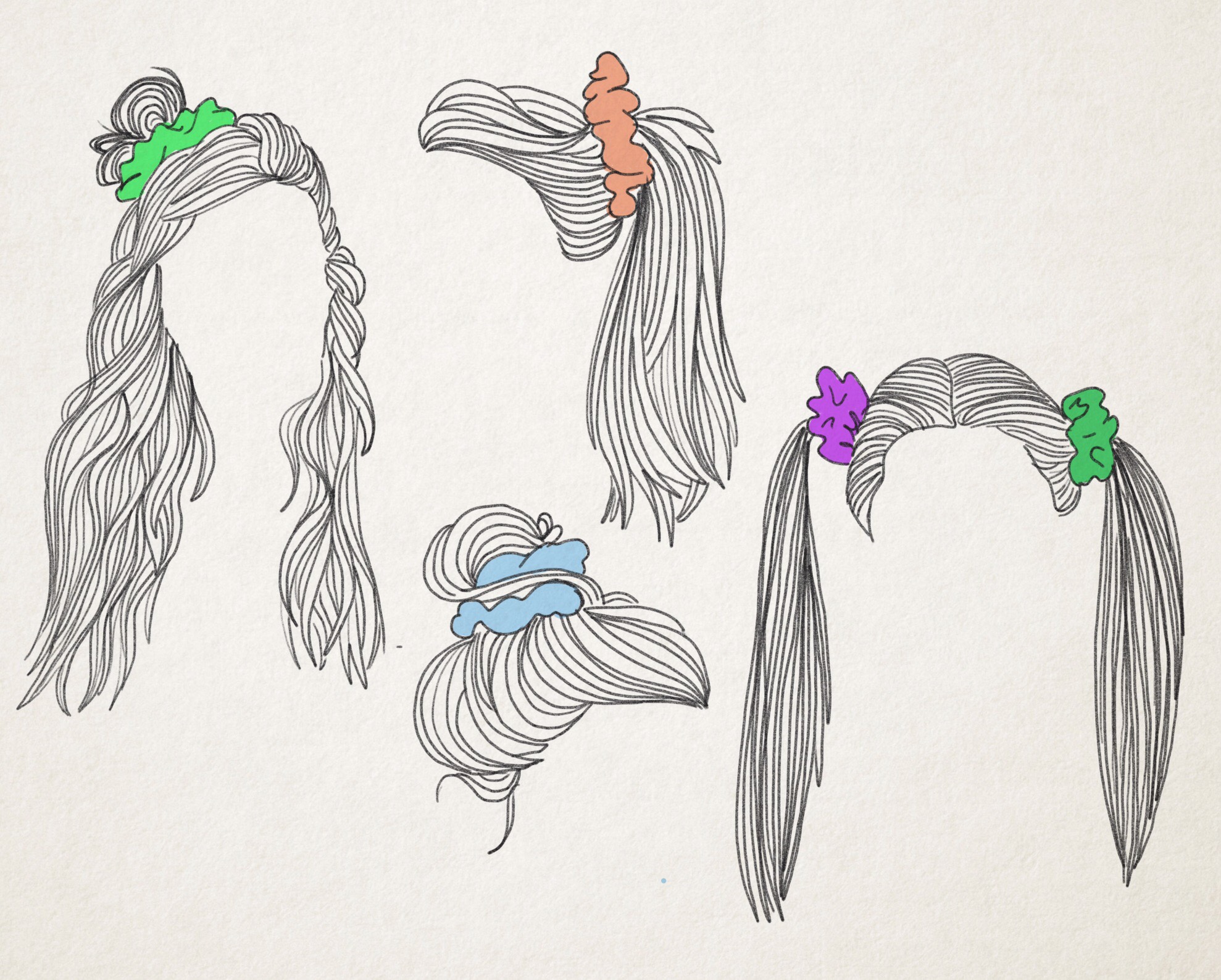The Scrunchie: An Icon of Bad Taste Turned Ironic
As I read it, there is a touch of malice in Vogue.com’s recent headline, “Is that a Scrunchie, Lily-Rose Depp?” I could be projecting. But I wore scrunchies the first time around and it’s disconcerting to see a new generation embracing this old, slightly traumatic story. This time, they say, it’s ironic. Nostalgic. And after all, what accessory could be more in keeping with normcore, the anti-fashion stance that The New York Times considers either a “fashion movement or a massive in-joke?”
But, still.
The return of the scrunchie began in 2013 with its appearance on the Missoni, Vivienne Westwood, and Louis Vuitton runways—an icon of bad taste turned ironic. Not everyone was amused. In England, especially, responses varied. Harper’s Bazaar (UK) stated unequivocally that the scrunchie “is one fad that the Bazaar fashion team will be ignoring.” But for most of the British press ignoring it became impossible when Cressida Bonas, Prince Harry’s then-girlfriend, was frequently spotted wearing this “populist tiara.” Huffed The Globe and Mail, her proclivity “caused a torrent of discussion about what kind of person she is.”
I confess it makes me wonder too. And, for a moment, wondering makes me feel confident; the valued protector of an elevated taste level. But it’s a lie. I, like most of Gen-X, am generationally complicit in the existence of this ugly hair decor.
Since abandoning the scrunchie in 1994 (after cutting my hair à la Uma Thurman in Pulp Fiction) I’ve cycled through a whole lot of trends. I’ve done minimalism and sexy Tom Ford Gucci (knockoffs, if only I could afford the real thing…). I’ve done Marilyn-inspired Madonna and Evita Madonna. I’ve done the slip dress, hip-huggers, and high-waisted pants. I’ve done message t-shirts and chokers and brown lipstick and heavy lip liner and various incarnations of Boho (not, of course, all at once). I loved deconstruction. But not one of these trends ever generated the retroactive antipathy that is the legacy of the scrunchie. (Brown lipstick and liner came closest.) Until 2013, it seemed that that no one could forgive the scrunchie. And that is a little baffling.
“I used the scrunchie to achieve height...achieving a sense of the colossal perhaps not seen since 1775 when Marie Antoinette’s mother warned her that her towering ‘dos threatened the sanctity of her crown.”
It wasn’t always like this. Once upon a time, there was once a never-ending rainbow of scrunchies. In the late 1980s and the early 1990s the scrunchie was everywhere, on everyone. Students, mothers, mall rats, gym bunnies, and social workers. It could be nothing more than an accessory of convenience: at its core the scrunchie was simply an elastic that didn’t rip out your hair. Or it could be a fashion statement, generally accomplished with garish colors, patterns, plaids and, mostly, by matching it with other elements of an ensemble. Matching was power; it exuded control and implied affluence. Matching was for mean girls.
I was never about matching; although this doesn’t mean I deserve extra credit. Au contraire, as my modus operandi was more problematic. I used the scrunchie to achieve height. I did that. And I did that very “successfully,” achieving a sense of the colossal perhaps not seen since 1775 when Marie Antoinette’s mother warned her that her towering ‘dos threatened the sanctity of her crown. “Hurtling toward an abyss” is how Queen Marie Theresa put it, using a sense of drama commensurate with three-foot-tall hair. [1]
My mother always liked my hair. Hers was big too.
I don’t recall specifically when attitudes began to change. Surely it was the final death knell when, in 2003, Carrie Bradshaw told her Sex and the City boyfriend, “no woman . . . would be caught dead at a hip downtown restaurant wearing a Scrunchie.” The universal accessory had become a universal embarrassment. For the followers of fashion, it was toilet paper stuck to a Jimmy Choo at a hip downtown restaurant. So we’d all spent a good part of the late 1980s and early 1990s trailing Charmin. You’d be resentful, too. It’s like going to bed with the handsome scholar-next-door and waking up with Donald Trump.
At some point in the 1990s, I got into an elevator. The 1970s were having a fashion moment and so was I. The shirt I wore remains in my pantheon of favorites: camel-colored pleated polyester, it had a blouson bodice, wide sleeves, and the tendency to slip off my shoulder. It was the embodiment of the Studio 54 life I’d dreamed of before moving to New York. As I stepped into the lift, the two women who were already inside—well dressed, in their 50s—looked my way and suddenly stopped talking; their look was more bemused than hostile. “I had that shirt,” announced one woman. “I remember,” said the other. “Just look at that.” For a moment, no one said another word as they observed their past, and I, my future.
The 1990s is now a long, long time ago. And now here I am, croaking out that same amazement I inspired so many lifetimes ago. I had that scrunchie. I remember. And here’s the heart of it: “Remembering” the scrunchie freaks me out more than the thing itself ever could. So have at it, kiddos. And remember me in 20 years.
Notes
[1] Caroline Weber. Queen of Fashion: What Marie Antoinette Wore to the Revolution (New York: Henry Holt and Company, 2006), 117.




